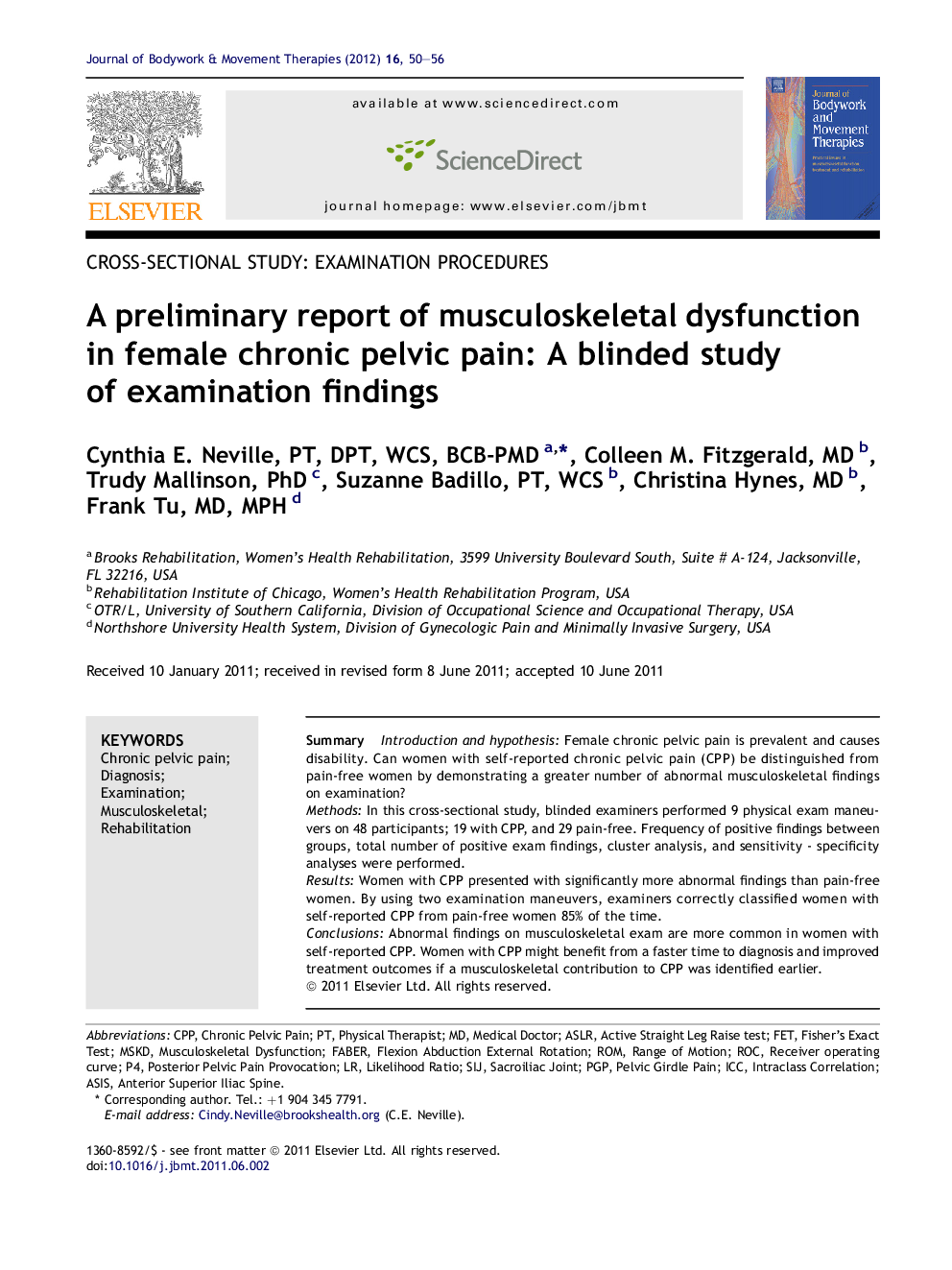| Article ID | Journal | Published Year | Pages | File Type |
|---|---|---|---|---|
| 2619683 | Journal of Bodywork and Movement Therapies | 2012 | 7 Pages |
SummaryIntroduction and hypothesisFemale chronic pelvic pain is prevalent and causes disability. Can women with self-reported chronic pelvic pain (CPP) be distinguished from pain-free women by demonstrating a greater number of abnormal musculoskeletal findings on examination?MethodsIn this cross-sectional study, blinded examiners performed 9 physical exam maneuvers on 48 participants; 19 with CPP, and 29 pain-free. Frequency of positive findings between groups, total number of positive exam findings, cluster analysis, and sensitivity - specificity analyses were performed.ResultsWomen with CPP presented with significantly more abnormal findings than pain-free women. By using two examination maneuvers, examiners correctly classified women with self-reported CPP from pain-free women 85% of the time.ConclusionsAbnormal findings on musculoskeletal exam are more common in women with self-reported CPP. Women with CPP might benefit from a faster time to diagnosis and improved treatment outcomes if a musculoskeletal contribution to CPP was identified earlier.
► Blinded examiners performed nine physical exam maneuvers on female participants with and without chronic pelvic pain (CPP). ► Women with CPP presented with more abnormal musculoskeletal findings than pain free women, and examiners correctly classified women with CPP 85% of the time. ► Whether a cause or effect of CPP, the musculoskeletal system in women with CPP can be compromised. ► Women with CPP may benefit from a faster time to diagnosis and improved outcomes if musculoskeletal contributions to CPP are identified earlier.
